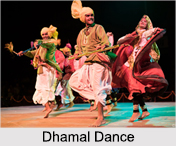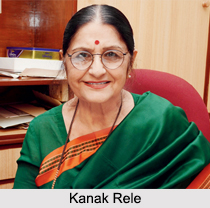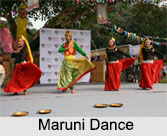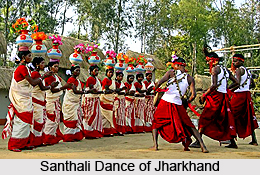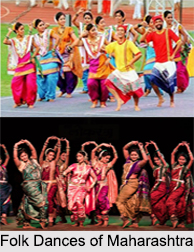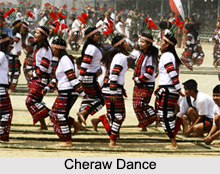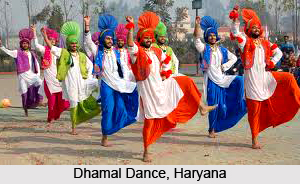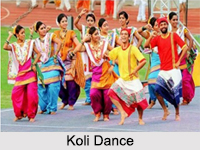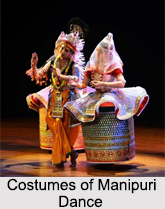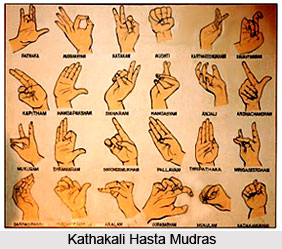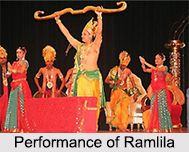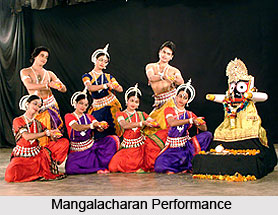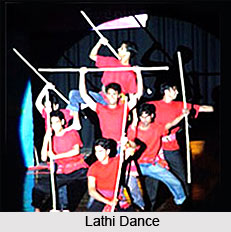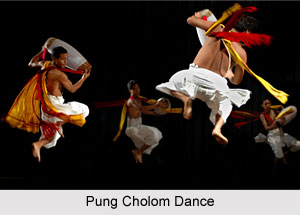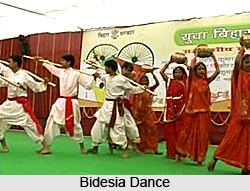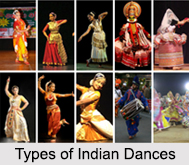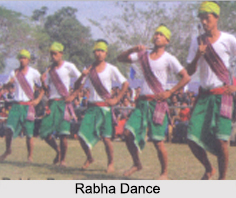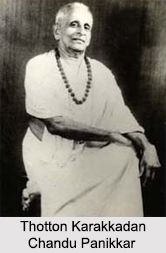 Thotton Karakkadan Chandu Panikkar was a greatest exponent of "Vettattunatu" in northern Kathakali, which emphasizes the pure Kathakali dance form. He is especially famous for his portrayals of the characters of Bhima, Arjuna, Durvasa, Hanuman, Daksha, etc. Sri Chandu Panikkar was a legend of Kathakali and pride of Malayalees as well as to the great art of Kathakali itself. He also taught famous dancer Ramgopal at his school "Kalakendra" in Bengaluru.
Thotton Karakkadan Chandu Panikkar was a greatest exponent of "Vettattunatu" in northern Kathakali, which emphasizes the pure Kathakali dance form. He is especially famous for his portrayals of the characters of Bhima, Arjuna, Durvasa, Hanuman, Daksha, etc. Sri Chandu Panikkar was a legend of Kathakali and pride of Malayalees as well as to the great art of Kathakali itself. He also taught famous dancer Ramgopal at his school "Kalakendra" in Bengaluru.
Early Life of Thotton Karakkadan Chandu Panikkar
Thotton Karakkadan Chandu Panikkar was born on 10th March 1875 to Sri Achan Veettil Raman Nair and Smt. Thotton Karakkadan Ucchira in Trikkarppur, Kerala. At his small age he started his training in "Ottan Thullal" under the supervision of Karivellur Vazhakkodan Kannan Nair at "Thazhakkattu Mana". Afterwards, in 1893 he began his lessons in Kathakali under Sri. Chamrakulathu Gopala Panikar for one year and then he became the chief student of famous Guru Tholanoor Valiyathodi Eachra Menon at "Thazhakkattu Mana".
Under the guidance of Guru Eachra Menon, Thotton Karakkadan Chandu Panikkar turned into full-fledged Kathakali performer and earned recognition. He was first introduced on the stage in the role of Arjuna in "Subhadra Haranam". For 12 years he stayed as a part of "Thazhakkattu Mana Kathakali Yogam" but he left the yogam after the demise of Shri Vasudevan Thirumunbu.
Later, leading the request from his followers, he took the charge of `Varanakkottu` Kathakali Yogam for few years. Throughout this period, he moulded a talented student, Puthiyadathu Krishnan, into a gem and named him as Kalamandalam Krishnan Nair. He became in charge of few other famous Kathakali Yogam. Later, he took charge as Guru of the Kathakali group of "Vatakkancheri Valiya Mana" and this troupe performed regularly in the palaces of Cochin (Kochi) Maharajas at Thrissur, Kerala.
Achievements of Thotton Karakkadan Chandu Panikkar
Thotton Karakkadan Chandu Panikkar had a good collection of Kathakali plays. He advanced "Kalladikkodan" tradition much in with an additional stress on "Bhava" and "Angasuddha". Sri Chandu Panikkar was invited to be the head of the Kathakali section at the world famous Kalakshetra. He had the privilege of being the Head of Kathakali Department for 16 years at Kalakshetra, Channai. He was honoured with the title of "Veera Srinkala". Then he received two gold medals from the Cochin King. Chandu Panikkar was offered National Sangeet Natak Academy Award in 1958 and in acknowledgment of his dedication to art. He was awarded with "Veer Srinkala" and "Kesabharam Kireetam" by the Association of Namboothiris at Talipparamba, Kerala.
Death of Thotton Karakkadan Chandu Panikkar
Thotton Karakkadan Chandu Panikkar was completely active and creative till his death on 16th January 1969 at his house in Kunhimangalam, Kerala at the age of 94.
